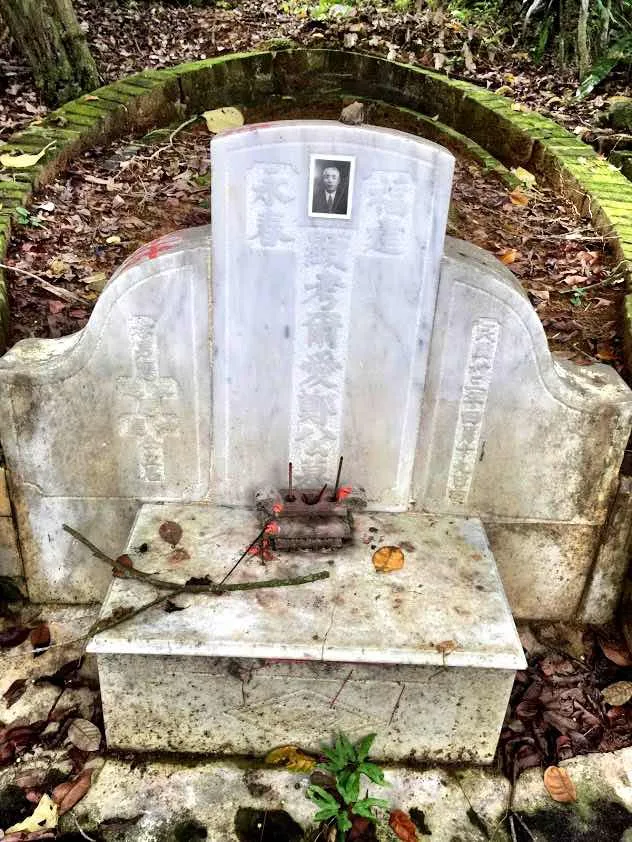29 TAN EAN TECK 陳延德
The Dilemma of the Overseas Chinese Association (OSA)
TAN EAN TECK 陳延德 (1902 – 1944 ) Place of Ancestry: Tung Ann (同安)
To work or not to work with the Japanese? That was a question that had no clear answer during the Japanese Occupation. Tan Ean Teck, like his eldest brother Tan Ean Kiam, was a successful businessman in a well respected family. But his life ended violently after returning from an inspection of the Endau settlement in Johore.
Within two years under Japanese occupation food was in short supply and foreign trade disrupted during World War II, diminished much-needed imports. The Japanese then initiated a Grow More Food campaign in hopes of making Singapore more self-sufficient. As always for projects involving the larger Chinese community they turned to the Overseas Chinese Association (OCA). Tan was tasked to lead the project to develop Endau in Johor into an agricultural settlement for Chinese settlers. The settlement was ready in September of 1943 when settlers started to move in. By March 1944, it was reported by the Syonon Shimbun – the Japanese daily – that there were 1,591 settlers and in April the numbers were up to 3000, about 1765 settlers (about 300 families) and 1200 workmen. Unknown to Tan, he was to embark on his last trip to Endau on 19 April, with an entourage including other OCA members and Japanese officials for an inspection. The convoy was ambushed by the Malayan People’s Anti-Japanese Army (MPAJA) In a gripping account of the incident by OSA member Yap Pheng, he found the bodies of Tan Ean Teck and Mr. Tay Nee Ai (Tay Ee Ai) lying beside the road. Yap had escaped the ambush as his vehicle had stopped earlier for a toilet break. Ironically, Lee Choon Seng, VP of OCA, survived a bullet that struck his OSA badge and grazed his cheek. Yap found him alive but dazed, caressing the badge. The Japanese had required all members of the Chinese community to be identified by badges of where they work or the organisations they belonged to.
The OCA had long been a target of anti-Japanese resistant groups who had gone underground. They viewed the OCA as traitors for their collaborations with the Japanese. The Malayan Communist Party was quick to join them and under the umbrella of the Malayan People’s Anti-Japanese Army (MPAJA) , their forces kept an eye on their activities, waiting for the opportunity to attack.
Such was the dilemma that OCA members faced during the Occupation – resist the enemy and risk more Chinese lives, or work with the enemy to save more lives?
Tan’s body was transported to Singapore on 23 April 1944, where he received full honours in the first public Syonan funeral, attended by Mayor Colonel Koichi Okubo and other senior Japanese officials. This must have been a contentious move for anti-Japanese supporters.
Tan was just 42 at the time of his death, which came a year after his eldest brother Tan Ean Kiam died from a heart attack. He was in fact a trustee of his brother’s will. Ean Teck had come from Tung Ann in Fujian province to Singapore when he was 16 to work for his brother, who was Managing Director of OCBC. At 20, he started his own business and became successful in his own right and in the spirit of the family tradition donated to charitable causes. In 1941, Ean Teck donated land from his plantation in Senai, Johor, to a Chinese school that still exists today. He was also involved with the Hokkien Huay Kuan, the Chinese Chamber of Commerce, the Tung Ann District Guild and many other schools and social institutions.
Undoubtedly, Tan had Chinese interests at heart but in the fog of war, the OCA also cost him his life during a time when loyalty was called upon.
Tay Ai Nee is buried in Block 3 Division 2, plot 222, near Tan Ean Teck
by Lee Chyen Yee and Fabian Tee
Further Readings:
Scholar, Banker, Gentleman Soldier: The Reminiscences of Dr. Yap Pheng Geck
https://bukitbrown.com/main/2014/tan-ean-teck-endau-and-ww-2/
https://mymindisrojak.blogspot.com/2022/02/tay-ee-ai-bukit-brown.html
https://mymindisrojak.blogspot.com/2014


Recent Comments